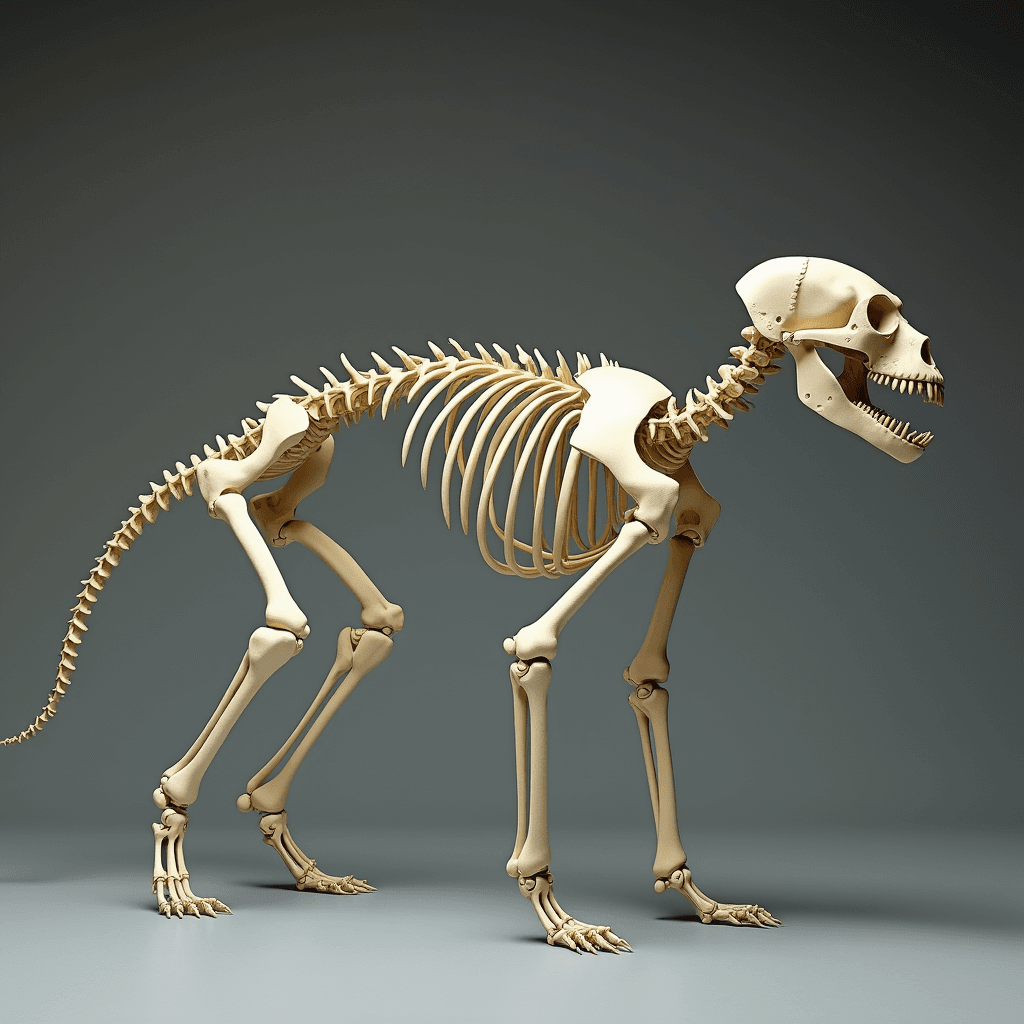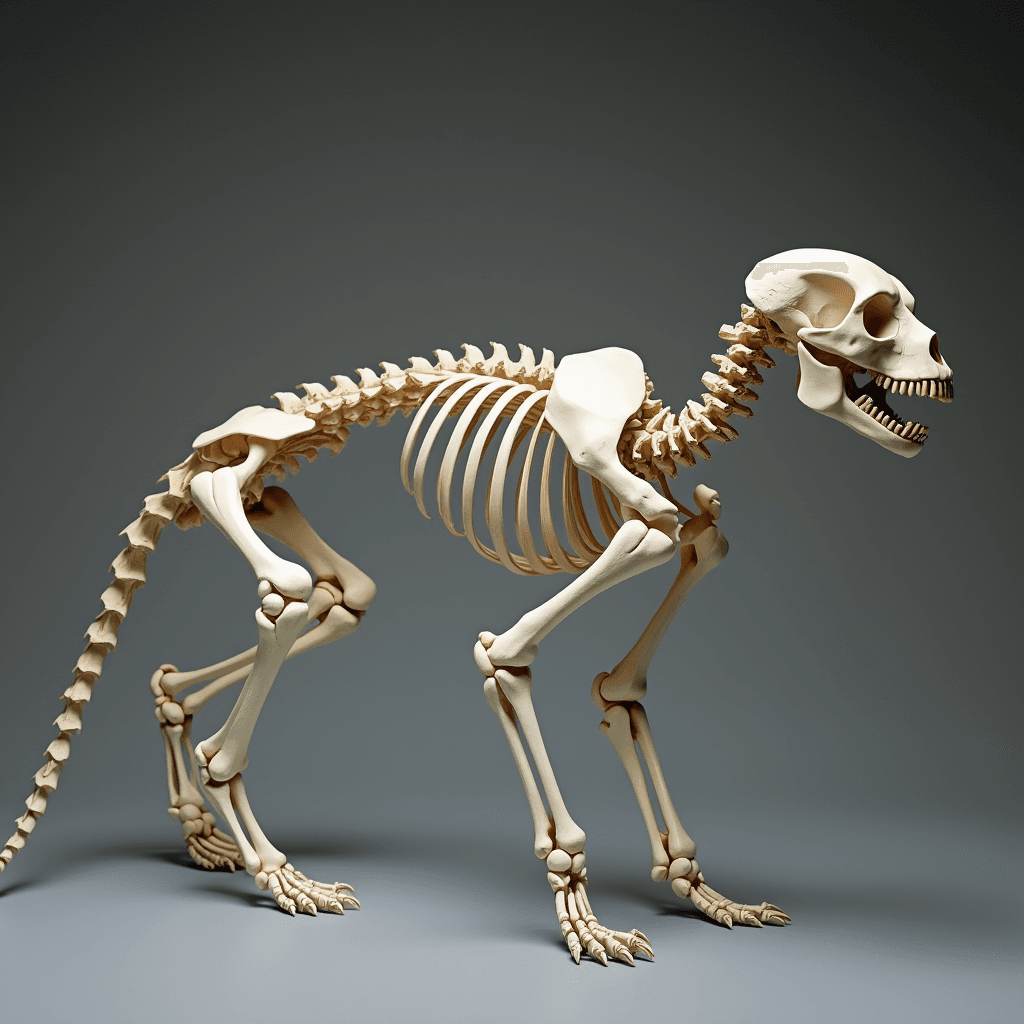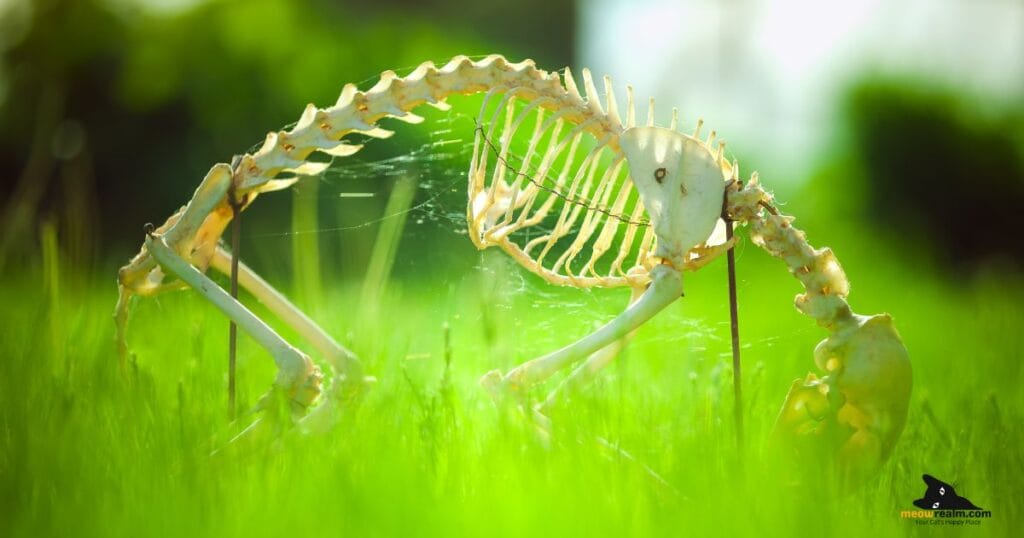Imagine watching a sleek, agile feline leap gracefully from a towering ledge, landing with poise and quiet confidence. Ever wondered what makes your cat so incredibly flexible and balanced? It’s all thanks to a unique skeletal structure perfectly suited to its graceful movements, stealthy prowess, and agile acrobatics. In this article, we’ll dive into the cat skeleton, uncovering the secrets behind its agility, strength, and impressive resilience. By the end, you’ll understand more about your cat’s anatomy and ways to keep it healthy for years to come.
Table of Contents
Anatomy of the Cat Skeleton
Overview of the Cat’s Skeletal Structure

Major Components of the Cat Skeleton
- Skull: Not only does the skull protect the brain, but it also supports sensory organs like the eyes, ears, and nose—key for a cat’s keen senses. The cat’s short, robust jaw is designed for efficient hunting.
- Spine: A cat’s spine is a marvel of flexibility. The vertebrae, or small bones along the spine, are separated by discs, allowing for high mobility, quick twists, and leaps.
- Ribs and Sternum: The ribcage is lightweight yet durable, providing protection to the vital organs while still allowing for flexibility.
- Limbs and Paws: The limbs of cats are muscular and made for speed and precision. The unique construction of their paws, combined with retractable claws, allows them to balance, climb, and hunt skillfully.
Special Features of a Cat Skeleton
Unique Traits of the Feline Skeleton
- Collarbones (Clavicles): Unlike humans, cats have “floating” collarbones, allowing them to squeeze through narrow spaces without the constraints that most mammals have.
- Tail Vertebrae: The tail contains numerous small vertebrae that allow for impressive flexibility and balance control.
- Digitigrade Stance: Cats walk on their toes (digitigrade), enhancing their stealthy, silent movement. This adaptation allows them to stalk prey and remain undetected.
Comparative Anatomy: Cats vs. Other Animals
| Bone Type | Cats | Dogs | Humans |
|---|---|---|---|
| Clavicle | Floating | Fixed | Fixed |
| Spine | Very Flexible | Less Flexible | Less Flexible |
| Tail Vertebrae | Numerous | Fewer | None |
Functions and Importance of Each Skeletal Part
The Spine and Its Role in Agility
Cats’ spinal structure allows for swift movements and agile landings. The spinal sections—cervical, thoracic, lumbar, sacral, and caudal—work together to allow flexibility and power. This flexibility is especially evident in their jumping abilities, as the spine enables a range of motion essential for pouncing on prey or jumping onto high surfaces.
Skull and Jaw: Protection and Efficiency
The skull provides excellent protection for a cat’s brain, while the jaw’s short and strong build is perfect for a carnivorous diet. Cats’ sharp teeth and powerful bite are suited for catching and eating meat, with specialized teeth for tearing and crunching bones.
Limbs and Paws: Adaptations for Stealth and Power
The unique structure of cat limbs aids in their precise movements, and retractable claws help maintain stealth. Their leg bones are designed to absorb the shock of high jumps, making cats exceptional climbers and jumpers.
| Skeletal Part | Function | Adaptation in Cats |
|---|---|---|
| Spine | Agility and Flexibility | Quick rotations and flexibility |
| Skull | Brain Protection | Enhanced for sensory support |
| Limbs | Precision and Power | Strong muscles, retractable claws |
Common Cat Bone Health Issues
Fractures and Bone Injuries in Cats
Cats are often curious and may get into mishaps. Injuries such as fractures or bone bruises can occur from falls, fights, or accidents. Signs of injury may include limping, swelling, or unusual movements. Recognizing these signs early can help in providing timely care.
Bone Diseases in Cats cat skeleton
As they age, some cats may face bone conditions like arthritis or osteoporosis, which affect their mobility and comfort. Other issues, such as metabolic bone disease, can be caused by nutritional imbalances or lack of sunlight exposure.
Nutrition and Bone Health cat skeleton
To keep bones strong, cats need a balanced intake of nutrients such as calcium, phosphorus, and vitamin D. A high-quality diet rich in these nutrients is essential for maintaining bone strength, especially as they grow older.
- Calcium: Vital for bone density
- Vitamin D: Aids calcium absorption
- Phosphorus: Supports bone structure
How to Support and Maintain a Cat’s Bone Health

Dietary Recommendations for Strong Bones cat skeleton
A nutrient-rich diet is a cornerstone of bone health. Look for cat food that includes essential vitamins and minerals. A well-rounded diet can help prevent conditions like osteoporosis, keeping bones strong and joints flexible.
Exercise for Bone Strength and Agility cat skeleton
Playtime isn’t just for fun—it’s crucial for your cat’s skeletal health. Activities like jumping, climbing, and running strengthen bones and muscles, helping maintain agility. Try to create an environment that encourages movement and exploration.
Creating a Safe Home Environment cat skeleton
A cat-proof home helps prevent injuries. Ensure there are safe areas for climbing and soft landings, and consider investing in sturdy cat trees. By setting up secure spaces, you reduce the likelihood of falls and ensure your cat’s curious nature remains safe.
FAQ Section
How Many Bones Does a Cat Have Compared to Humans?
Cats have approximately 230 bones, while humans have 206. Their additional bones provide the flexibility needed for their agile movements.
Why Is a Cat’s Spine So Flexible?
The feline spine has more vertebrae and highly elastic intervertebral discs, allowing for a broader range of motion than most animals.
What Causes Bone Problems in Cats?
Aging, poor nutrition, lack of physical activity, and genetics can lead to bone health issues in cats. Maintaining a proper diet and providing regular exercise can mitigate these risks.
How Can I Tell if My Cat Has a Bone Injury?
Signs include limping, reluctance to move, or visible swelling. If you notice these symptoms, consult a veterinarian for an accurate diagnosis.

Conclusion
Understanding the structure of your cat’s skeleton is more than a scientific curiosity—it’s an opportunity to give your feline companion the best care possible. By appreciating the complexities of their bone structure, you’re better equipped to ensure their health and happiness. A balanced diet, plenty of exercises, and a safe environment all contribute to a strong, flexible skeleton that supports your cat’s natural instincts and agility.
Whether you’re an experienced cat owner or new to the joys of feline companionship, keeping your cat’s bones strong and healthy is a rewarding way to enhance their quality of life. If you found this guide helpful, consider sharing it with fellow cat enthusiasts or exploring additional resources for cat care and health.
cat skeleton cat skeleton cat skeleton

